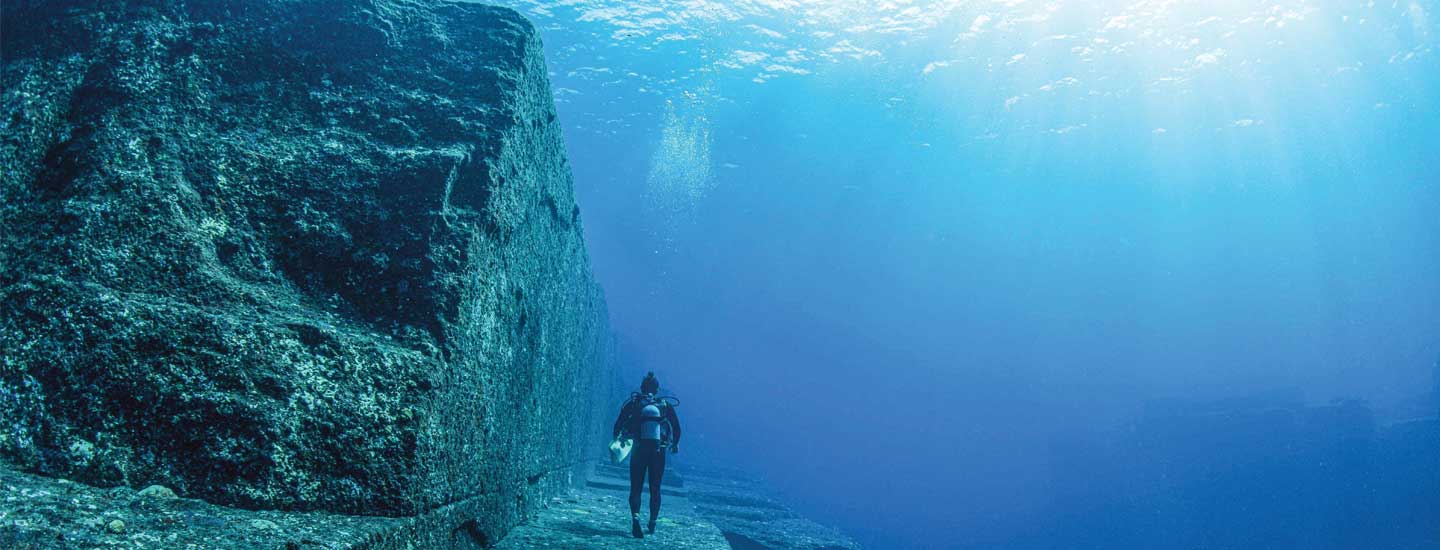Jim McMahon/Mapman®
For years, Japan’s tiny Yonaguni Island had just one claim to fame: Its waters were the perfect place for scuba divers to swim with hammerhead sharks. Then, in 1986, a local diver made a discovery that really put the island on the map. About 80 feet below the surface, he encountered a massive, pyramid-like object.
Now known as the Yonaguni Monument, the mysterious rock structure in the Pacific Ocean instantly sparked a debate: Had it been created by humans or by natural causes?
Some observers point to what appear to be arched entrances and carved steps as evidence that it was constructed by ancient humans. The prehistoric Jōmon (JOH-mahn) people lived in the region as early as 16,000 years ago.
But others say the structure was likely shaped by ocean currents, earthquakes, and other natural forces over millions of years. They note that the site resembles other natural geological formations with sharp corners and straight lines. For example, the Giant’s Causeway in Ireland is made up of thousands of interlocking rock pillars. The pillars were formed by an ancient volcanic eruption.
The Yonaguni debate continues, but research by geologists, archaeologists, and other experts tends to support the natural formation side. Are they right? Only hammerhead sharks may know for sure!
—Kathy Wilmore

